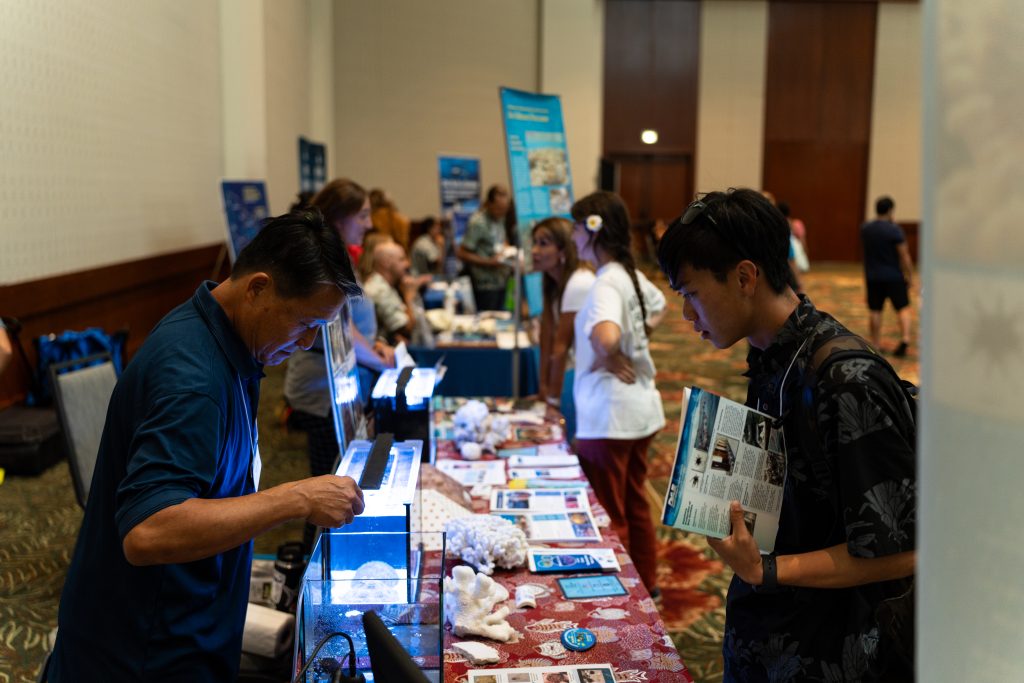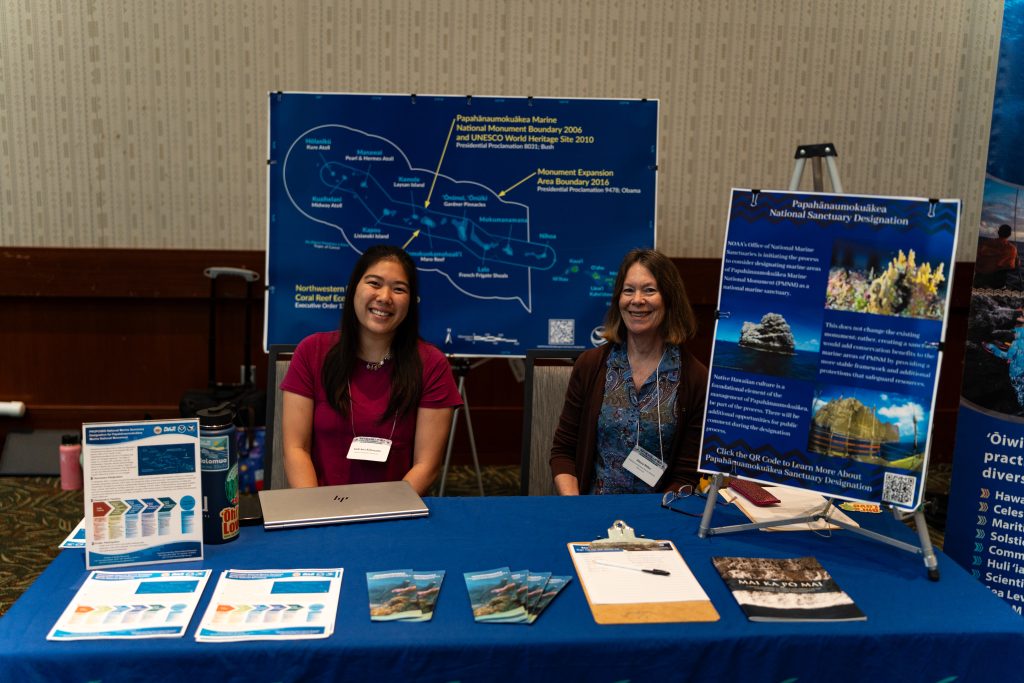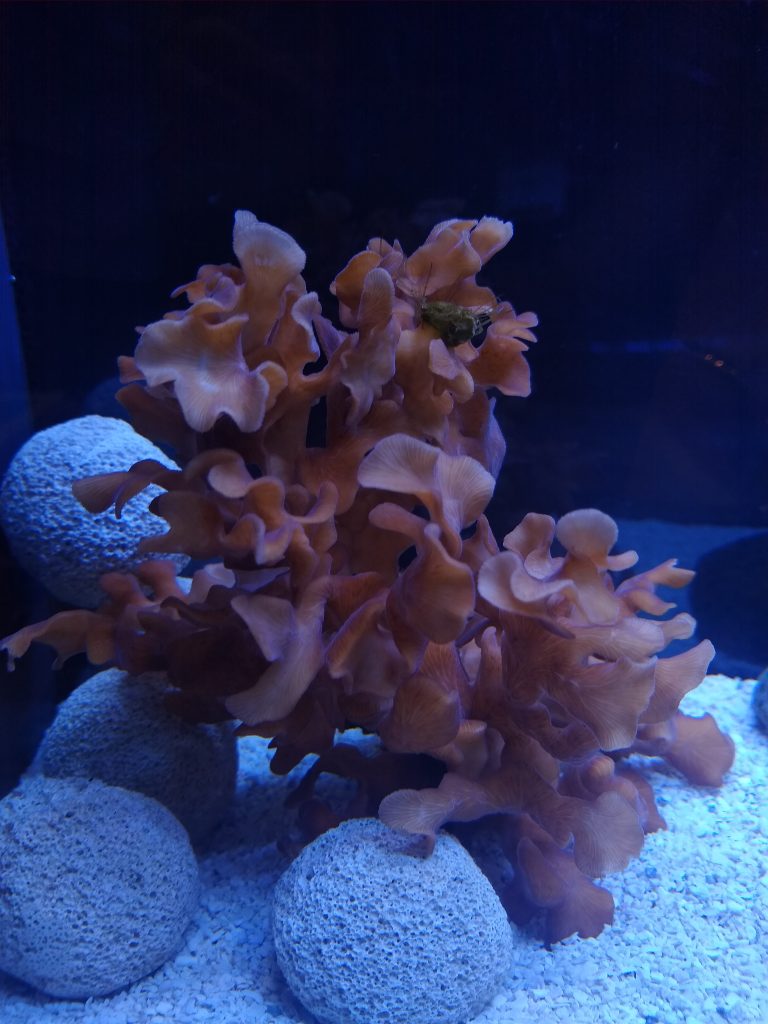6/30/23 – DAR at the 2023 Hawaiʻi Conservation Conference
By KelliAnn Kobayashi and Fiona Sandi
The 30th Anniversary 2023 Hawaiʻi Conservation Conference was special in many ways. The conference from June 27th to June 29th brought together scientists, policy makers, students, and community members to tackle current conservation issues in Hawaiʻi such as invasive species control, dangerous infrastructure, and relationship-building between governments and local communities. The conference started off with the first keynote speech from U.S. Secretary of the Interior Deb Haaland on Tuesday, followed by the second keynote speech from the State of Hawaiʻi Department of Land and Natural Resources’s (DLNR’s) Chairperson, Dawn Chang. Finally, the keynote speech on the last day was from Dr. Manulani Aluli Meyer. The Division of Aquatic Resources (DAR) provided an opportunity for staff to learn, present, and engage with community members throughout the three days of the conference.

Visitors at DAR’s table learning about coral construction.
At the booth exhibition, DAR representatives shared information about Papahānaumokuākea national marine sanctuary designation, aquatic invasive species, pono fishing around protected species, urchin rearing, the Holomua Marine Initiative, and the Hawaiʻi Coral Restoration Nursery.
DAR representatives also chatted with eager young conservationists about the ongoing Holomua coloring contest. The contest focuses on herbivores of the reef to celebrate the launch of Holomua’s new coloring book. Keiki up to age 12 can participate! Entries must be submitted by July 31, 2023, and winners will be announced August 14, 2023.
Many of DAR’s projects and programs were featured during presentations by DAR staff. Collaboration between government and community efforts in conservation was a common theme throughout the conference and was highlighted by Anita Tsang’s presentation titled “Incorporating Socio-Cultural Indicators into Marine Management Planning and Evaluations.” The project developed four main themes of socio-cultural principles and indicators for the principles. DAR partnered with community members to test the efficacy of these indicators at Pūpūkea Marine Life Conservation district on Oʻahu. Another form of community engagement is the inclusion of Hawaiian language in the naming and management of species, which was illuminated in the presentation by Laʻakea Phillips, a DAR partner from The Nature Conservancy, and Kealiʻi Sagum titled “Division of Aquatic Resources’ Comprehensive List of Aquatic Species Project and its Implications for Marine Resource Management in Hawaiʻi.” This presentation shared updates on the creation of a database for Hawaiian aquatic species, including each of their official Hawaiian names to be included in DAR records.

DAR’s table for Papahānaumokuākea national marine sanctuary designation.
Another example of community engagement was showcased by Katie Nalesere’s poster titled “Creating a Pathway for Community-based Monitoring to Inform Nearshore Resource Management.” The poster illustrated how the Kokua Community-based Monitoring Framework creates a pathway for communities to participate in data collection. A DAR project focusing on quickly repairing damaged aquatic environments was presented through Morgan Short’s poster titled “Optimizing Coral Microfragmentation to Produce Large Colonies in a Land-Based Coral Nursery for Restoration.” This project involved the development of a fast-growth process through microfragmentation (attaching small pieces of coral to concrete pyramids) and fusion, which produce coral growth at a highly accelerated rate, drastically altering damaged reefs. The task of repairing Hawaiʻi’s reefs was also spoken about in Honor Weber’s poster titled “Successfully Preserving and Restoring Hawaiʻi’s Endemic and Rare Coral Species.” Much of Hawaiʻi’s coral reefs are endemic (only present in a specific geological region), which has led to the creation of the Rare Coral Ark at the land-based Hawaiʻi Coral Restoration Nursery on O‘ahu.
The theme of the conference, aia i hiʻikua, i hiʻialo – reflecting on our past; dreaming on our future, was especially relevant to Papahānaumokuākea. The poster titled “The Journey to Sanctuary Designation for Papahānaumokuākea Marine National Monument and UNESCO World Heritage Site” described how the monument is in the realm of Pō, the place of akua, where gods and ancestral spirits reside. DAR is working together with the National Oceanic and Atmospheric Administration on national marine sanctuary designation for Papahānaumokuākea. The process is an example of natural and cultural preservation that provides an opportunity for community participation in marine management. Draft sanctuary designation documents are set to be published this fall with a public comment period to follow.

Coral from the Hawaiʻi Coral Restoration Nursery.
During the conference, one of DAR’s own, Luna Kekoa, received the Hawaiʻi Conservation Alliance Award for Outstanding Leadership. This award is given to an individual who embodies exceptional leadership in advancing environmental conservation in Hawaiʻi. Luna’s efforts involved raising awareness and strengthening community involvement in Hawaiʻi’s nearshore environments and fisheries.
DLNR-DAR was able to showcase a great deal of talent and leadership, learn from other members of the community, and inform and bring together communities to support environmental protection.
